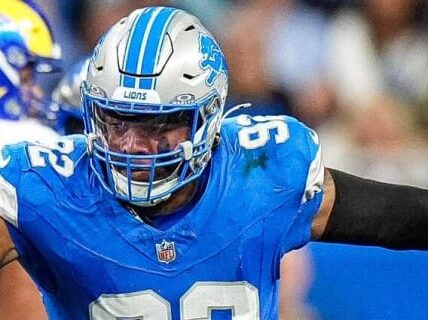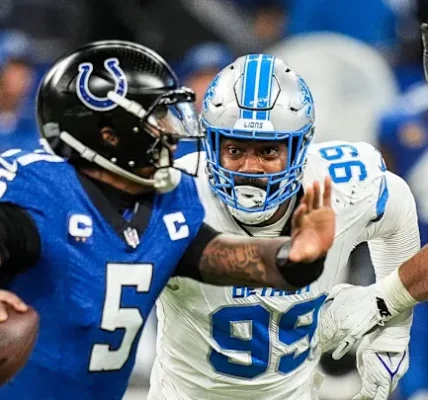Justin Fields is now at the center of the Jets’ newly revealed offensive blueprint.
Since Aaron Glenn hired Detroit Lions assistant Tanner Engstrand as the new offensive coordinator for the New York Jets, pundits have been speculating about the offensive style and type of quarterback the team would choose to lead them in 2025 and beyond.
Would Engstrand, Detroit’s pass-game coordinator, replicate the Lions’ offensive scheme under Ben Johnson, or would he favor the traditional West Coast offense he learned under Jim Harbaugh? Ultimately, the key question was: What kind of quarterback would the Jets’ new OC seek to run his system?
On the unofficial first day of NFL free agency, the Jets made a bold move, acquiring Justin Fields, giving a definitive answer to all the speculation. The aggressive move wasn’t just a gamble but a strategic shift toward their new offensive vision and identity.
New Jets quarterback Justin Fields is not Jared Goff The Detroit Lions’ offensive scheme has been tailored to suit Jared Goff, a traditional pocket passer who operates primarily under center, using play-action to open up the field.
While Fields can also make use of these concepts, he and Goff are entirely different players.
If the Jets’ goal was to adopt a similar system to Detroit’s or find a quarterback like Goff, they wouldn’t have pursued Fields as their main choice.
One of the Jets’ fallback options, had they not signed Fields, was Marcus Mariota — a quarterback with a similar style to Fields. This contrasts with a potential interest in traditional pocket passers like Jameis Winston or Kirk Cousins.
Outside of Lamar Jackson and possibly Jayden Daniels, Mariota’s teammate in Washington, there aren’t many quarterbacks as mobile as Fields. In 2022, Fields rushed for over 1,000 yards in a season.
Only Michael Vick and Jackson have matched that feat. Fields has averaged 50 yards rushing per game over his four-year NFL career, second only to Jackson’s 59.9 yards per game.
Thus, it’s clear the Jets are not bringing in Fields to restrict his mobility.
With Engstrand at the helm and Fields as the quarterback, expect the Jets to emphasize shotgun plays, run-pass options, and designed rollouts to get Fields on the move for both runs and passes. These strategies were not typically part of Engstrand’s playbook when he was in Detroit with Goff, but he’s now working with a completely different type of player.
As a result, Engstrand, along with offensive line coach Steve Heiden and New York’s quarterbacks coach Charles London, a former running back, will likely make the Jets’ offense more run-heavy than the Detroit scheme.
The signing of Fields will impact the entire offensive direction and influence the types of players the Jets target to further enhance the scheme. This means they’ll prioritize blocking receivers, tight ends, and fullbacks, and may look for a quarterback who fits their new offensive vision.
Fields’ signing foreshadows the Jets’ approach to the QB position in the 2025 NFL Draft Even with Fields and veterans like Tyrod Taylor, Jordan Travis, and Adrian Martinez in the fold, it’s clear the Jets are still open to drafting a quarterback for the future.
The player who most resembles Fields in terms of mobility is Alabama’s Jalen Milroe. Milroe, while raw as a passer, would benefit from sitting for a year or two to develop his skills. With the Jets, he could learn behind Fields and Taylor, making it an ideal situation for his growth.
Despite the ongoing quarterback chaos in New York, there finally seems to be a coherent strategy in place for the position.



